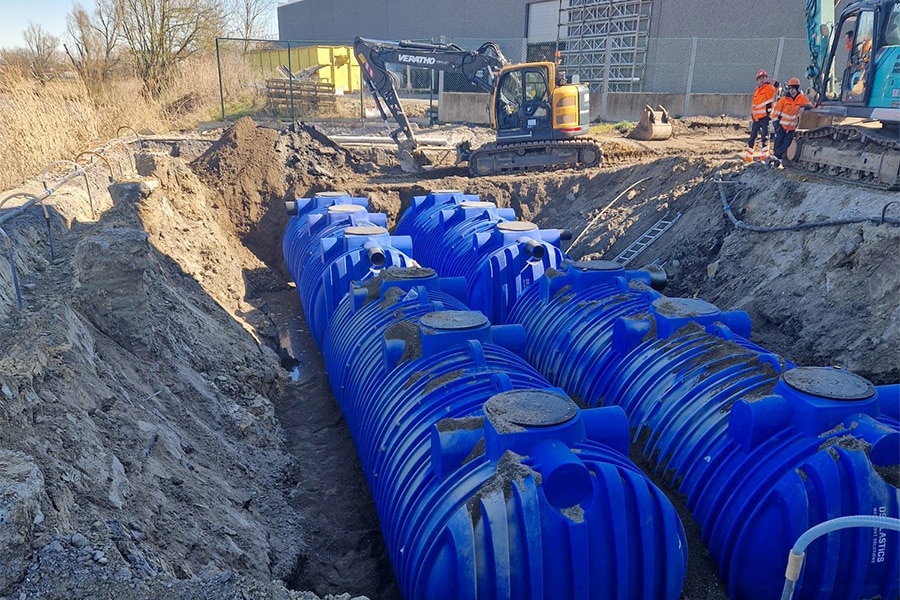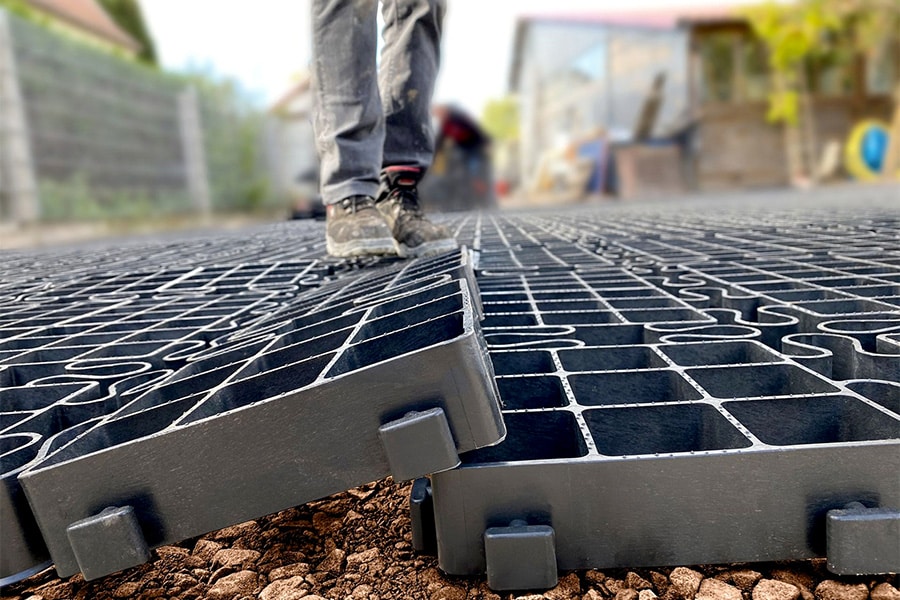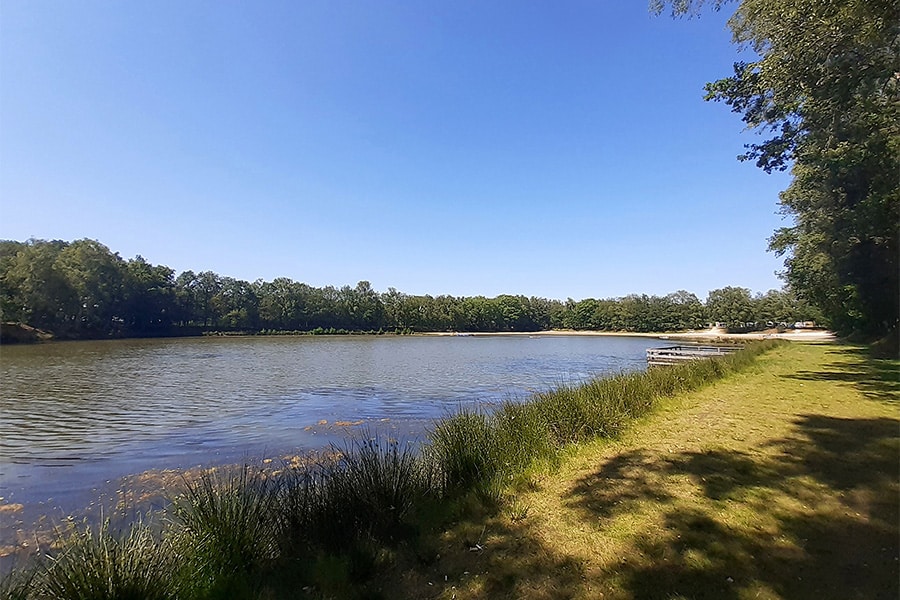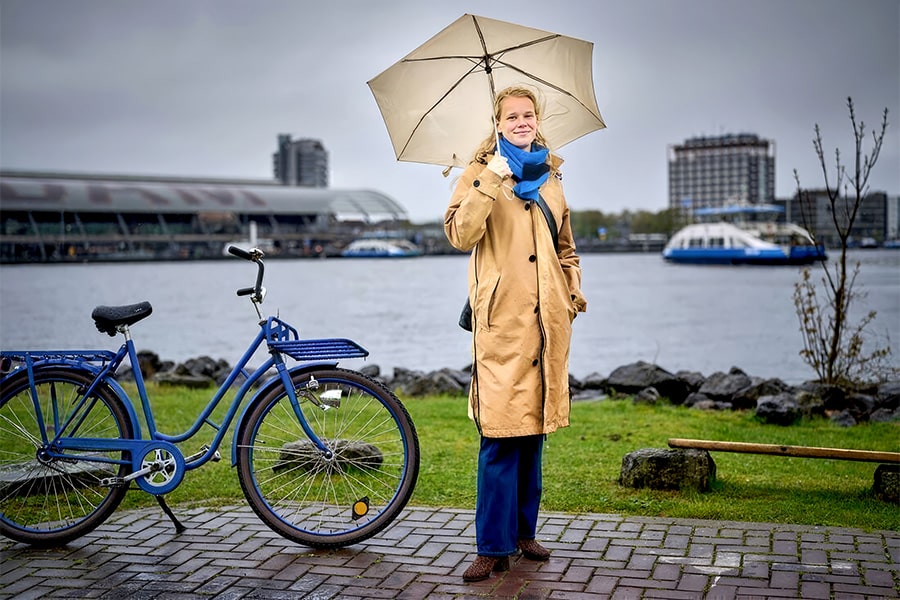
From dredging sludge to levee clay: "Building with Nature"
In Delfzijl, on a site of some 15 hectares, clay made from dredging sludge from the Ems-Dollard is ripening. A pilot project, this "Kleirijperij", conceived and executed by a consortium including Ecoshape (Van Oord, Boskalis, Arcadis, RHDHV, Witteveen+Bos, Wageningen Marine Research and Deltares), Groningen Seaports, Rijkswaterstaat, Het Groninger Landschap, Province of Groningen and the Hunze and Aa's Water Board.
The goal of this pilot? To create usable clay that can be used to reinforce a rejected sea dike over a length of 12.5 km. We talk about this unique project with Marcel van den Heuvel, Technical Manager Kleirijperij and Engineering Specialist at Van Oord and Erik van Eekelen, Program Manager at EcoShape and Lead Engineer Environmental at Van Oord.
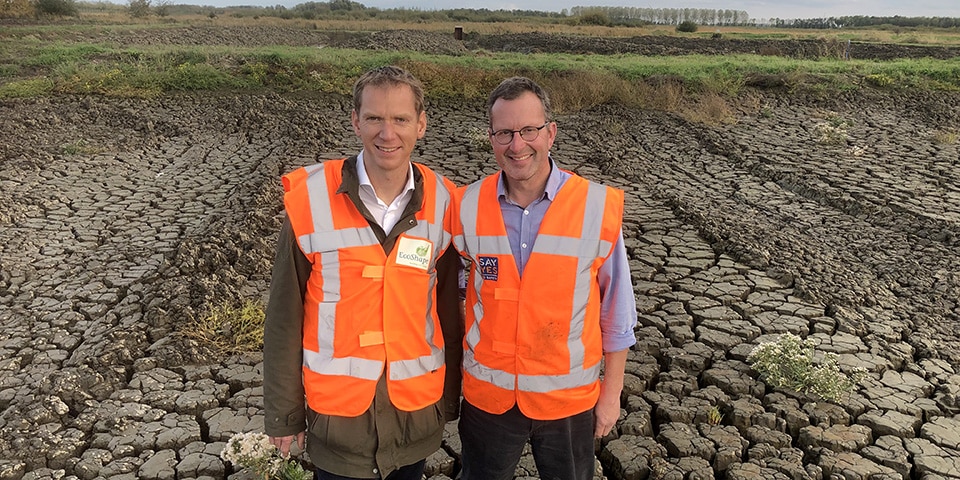
On the left, Erik van Eekelen, Program Manager at EcoShape and Lead Engineer Environmental at Van Oord, and on the right, Marcel van den Heuvel, Technical Manager of Clay Reclamation and Engineering Specialist at Van Oord.
A great step forward for the hydraulic engineering industry
Why is Van Oord involved in Ecoshape, we ask. Van Eekelen explains: "Building with Nature is highly valued by Van Oord. Innovative developments that contribute to greater sustainability in the marine engineering sector are important to everyone. We are happy to share our knowledge so that everyone can benefit. In this way, hydraulic engineering works become better and therefore more feasible. Through the Building with Nature principle, we want to think proactively about using natural resources with a positive effect on the ecosystem. This has great social importance, not only for Van Oord as a contractor, but for the entire Dutch hydraulic engineering sector."
100% green building material
The Pilot Kleirijperij in Delfzijl contains dredging sludge from the Eems-Dollard. Through a natural process, the dredged sludge must settle and eventually produce solid clay. "The great thing is that what is too much in one place, the dredged sludge, can eventually be used to solve a shortage in another place, which is clay. The dike in need can soon be reinforced with the mature clay in a 100% green way," says Van den Heuvel. "Because there is no need to supply clay from distant areas, this way of working is extra sustainable. Even better is that by using clay as a natural building material, the dike retains its green character. Where asphalt would otherwise be used as a solution, we will soon find a 100% green building material to reinforce it."
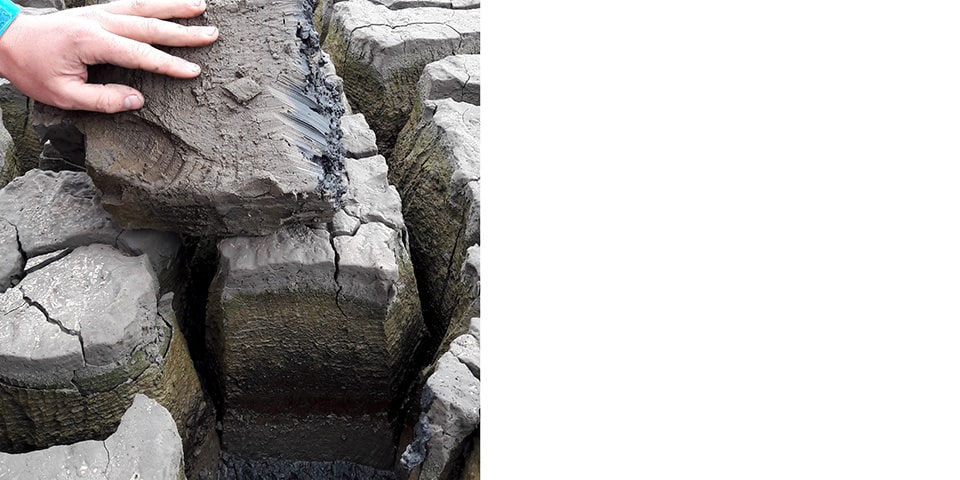
July 2019: the maturing silt is already getting a real clay structure. (Image: Deltares)
Pilot follows initial trial
"The idea originated back in 2014, when EcoShape started a program with the collaborating Wadden Sea ports, which all suffer from silt. There is a relatively large amount of maintenance dredging taking place and there is no hardship to intervene because the Wadden Sea is a Unesco World Heritage Site. Together we then defined projects, including the salt marsh trial Delfzijl and the sludge engine in Harlingen. Sediment management is a big thing. Ecoshape partners were already working on the Ems-Dollard problem, when the water boards knocked on the door for dike reinforcement and were looking for a solution other than traditional asphalt. Green dikes have a scenic value, hence the large clay requirement," Van Eekelen continued. "In 2015, we sat down together with our ideas, which we wanted to test at full scale. In July 2017, six of us signed off on implementing this trial. Thus, we have now set up a few acres and the clay mill is a reality. On April 5, 2018, the first sludge entered the depot."
The 15 test sections, or depots, are just under 100 x 100 meters each and have an average depth of 1.5 meters. "Everyone was surprised how quickly a crust formed on the depots, which were filled with liquid sludge with a substance density equivalent to chocolate milk. The crust was soon 30 to 40 cm thick, the clay drying out due to shrinkage and slumping. Then more oxygen comes in," Van den Heuvel explains. "It is partly a physical and partly a chemical process. Water, salt and organic substances (algae et cetera) have to get out because it has to become dike clay, which meets the applicable guidelines with regard to density, salinity and organic substances." Van Eekelen adds, "The requirements for dike clay were translated one-to-one in the pilot."
Second location is a reality
A second location has since been added, bringing the total number of test sections to 25. "No section is the same, there is variation in layer thickness, sometimes a draining sand layer, sometimes more active tillage layers. We also let some sections grow vegetation and there is a section that is half filled with fresh water, to influence salt extraction. The pilot is successful if we can make a good business case," Van den Heuvel said.
For Van Oord, it is important to identify the processes by which other types of sludge can be converted. "If the technique can be applied as a tailor-made process to sludge in certain areas, anywhere in the world, you can therefore make clay close to the source. This could become an excellent solution in some parts of the world. So we need to figure out how to determine the type of sludge, what clay you need and what process goes with it," Van Eekelen explains. "For Van Oord, what matters most is this translation into broader applicability. This is technical, but also precisely focused on environmental management, where nature becomes an essential component of the total."
